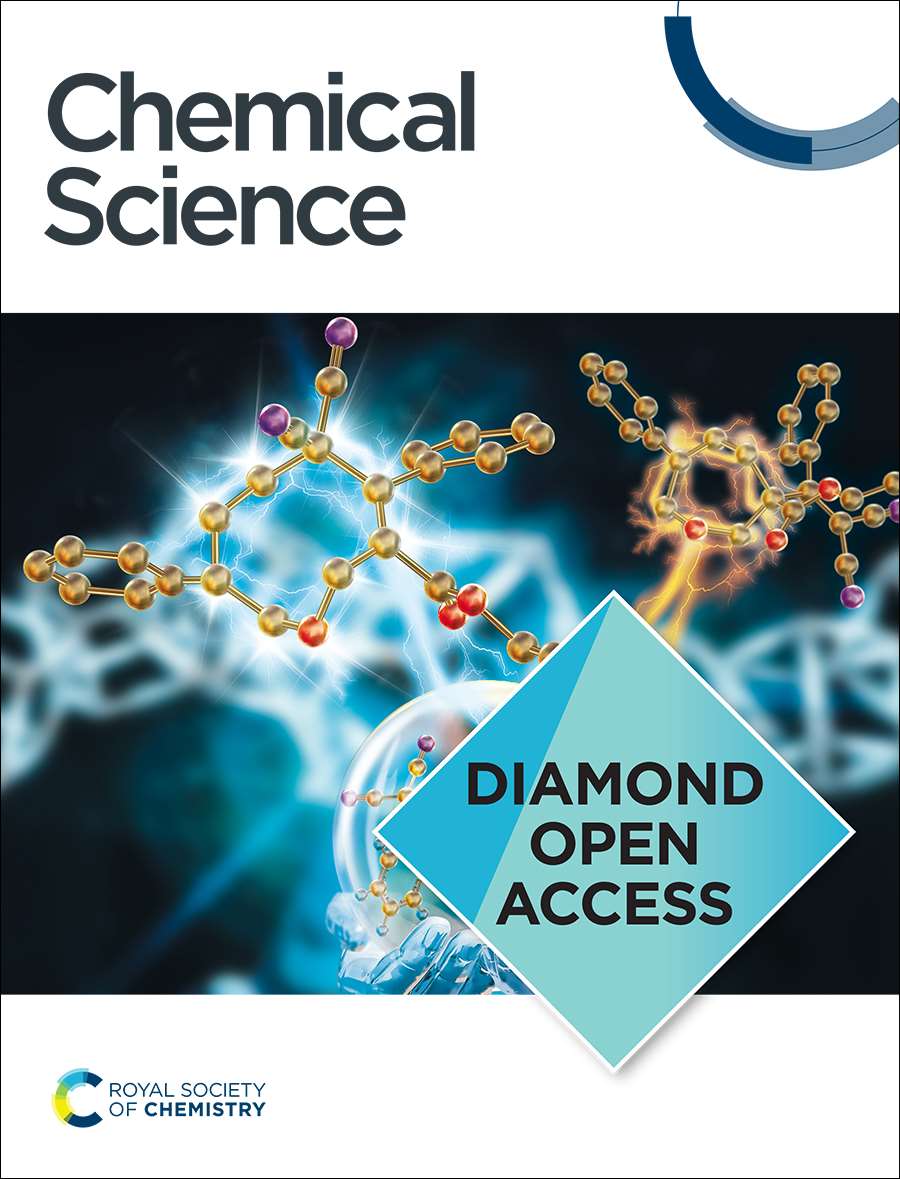Diazomethyl-λ3-iodane meets aryne: Dipolar cycloaddition and C-to-N iodane shift leading to indazolyl-λ3-iodanes
IF 7.6
1区 化学
Q1 CHEMISTRY, MULTIDISCIPLINARY
引用次数: 0
Abstract
Diazomethyl-λ3-iodanes have recently emerged as carbyne equivalents in organic synthesis, enabling the construction of multi-substituted carbon centers through strategic sequential activation of the diazo and iodane functional groups. Distinct from such reaction modes, we report here on the reactivity of diazomethyl-λ3-iodanes as iodane-bound 1,3-dipoles toward arynes. Equipped with bis(trifluoromethyl)benzyl alcohol-based benziodoxole (BX) moiety, diazomethyl-λ3-iodanes undergo annulation with arynes generated from ortho-silylaryl triflates and cyclic diarylhalonium salts, resulting in indazolyl-λ3-iodanes through [3+2] cycloaddition and carbon-to-nitrogen iodane migration. DFT calculations reveal that diazomethyl-BX prefers [3+2] cycloaddition with aryne over aryne insertion into the carbon–iodine(III) bond (carboiodanation) and that the subsequent iodane migration proceeds through two consecutive 1,5-iodane shifts. The utility of these indazolyl-BXs as indazole-transfer agents has been demonstrated by α-functionalization of N,N-dimethylaniline derivatives.重氮甲基-λ -碘烷与芳烃相遇:偶极环加成和c -碘烷向n -碘烷的转变生成吲唑基-λ -碘烷
重氮甲基-λ3-碘烷是近年来有机合成中出现的碳烷等级物,通过对重氮和碘烷官能团的策略性顺序激活,可以构建多取代碳中心。与这种反应模式不同,我们在这里报道了重氮甲基-λ3-碘烷作为碘结合的1,3偶极子对芳烃的反应性。以双(三氟甲基)苄基苯并多唑(BX)部分为基础,重氮甲基-λ -碘烷与正三氟硅芳基三氟酸酯和环二芳基卤鎓盐生成的芳香烃进行环化,通过[3+2]环加成和碘烷碳-氮迁移生成吲哚甲基-λ -碘烷。DFT计算表明,重氮甲基- bx更倾向于与芳香[3+2]环加成而不是芳香插入碳-碘(III)键(碳碘化),并且随后的碘迁移通过两个连续的1,5-碘移位进行。通过N,N-二甲基苯胺衍生物的α-功能化,证明了这些吲哚基bxs作为吲哚转移剂的效用。
本文章由计算机程序翻译,如有差异,请以英文原文为准。
求助全文
约1分钟内获得全文
求助全文
来源期刊

Chemical Science
CHEMISTRY, MULTIDISCIPLINARY-
CiteScore
14.40
自引率
4.80%
发文量
1352
审稿时长
2.1 months
期刊介绍:
Chemical Science is a journal that encompasses various disciplines within the chemical sciences. Its scope includes publishing ground-breaking research with significant implications for its respective field, as well as appealing to a wider audience in related areas. To be considered for publication, articles must showcase innovative and original advances in their field of study and be presented in a manner that is understandable to scientists from diverse backgrounds. However, the journal generally does not publish highly specialized research.
 求助内容:
求助内容: 应助结果提醒方式:
应助结果提醒方式:


